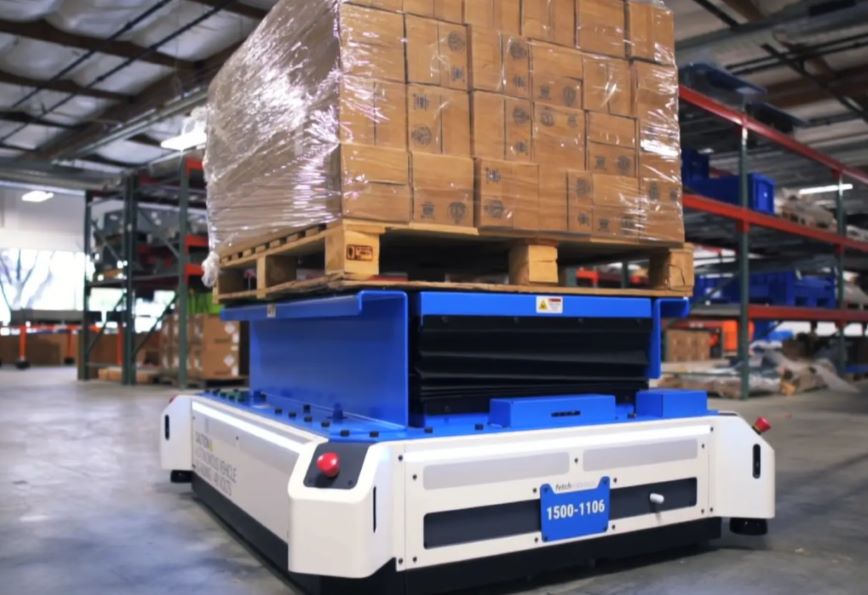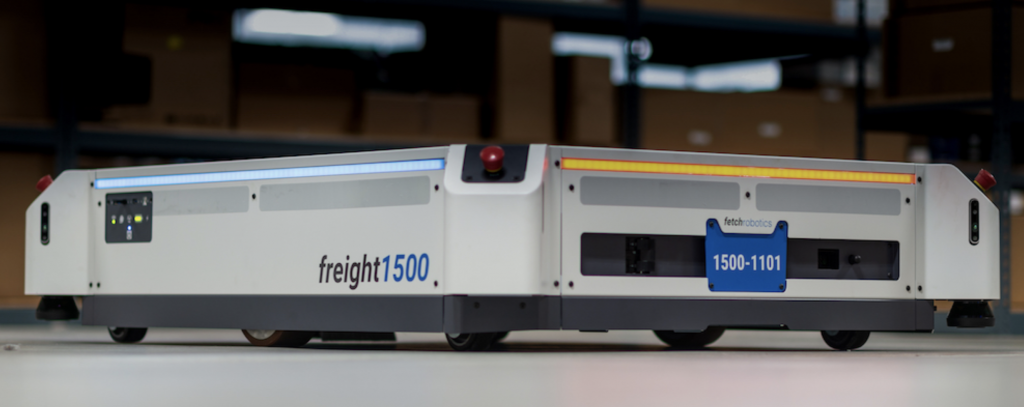Fetch Robotics announced its new PalletTransport1500, an autonomous mobile robot (AMR) that supports cross-docking, returns and case-picking workflows for contactless pallet transport in distribution centers, warehouses and store replenishment. The PalletTransport1500 will use Honeywell Intelligrated’s Momentum warehouse execution system software, known as Momentum WES, to safely move pallets and other large payloads up to 1,136 kg (2,504 lbs).

The PalletTransport1500 consists of the Fetch Freight1500 AMR with an integrated lift and a pick-up and delivery station, and already conforms with the new ANSI/RIA R15.08 standard for autonomous mobile robots. When combined with Momentum WES, which is designed to address e-commerce fulfillment challenges by orchestrating nearly every aspect of automated warehouse execution, the PalletTransport1500 can manage long-haul material transport without any need for human involvement, saving the time spent of operating forklifts and freeing up workers for more value-added activities.
By taking care of long-haul movements in the facility and keeping forklifts contained to inbound and outbound docks, the Pallet Conveyance solution reduces injuries and creates a safer, more efficient warehouse environment overall.
The 1500 model features dynamic obstacle avoidance technology as well as a certified hardware-based safety system which allows the large AMR to navigate and operate safely around associates and vehicles. Each robot has eight 3D cameras and two LiDAR sensors for superior navigation and fast, safe stops when an obstacle is detected. Freight1500 can accommodate a standard North American pallet size of 40″x48″.
With next and same-day delivery becoming expected service levels, distribution centers are under pressure to meet rising consumer expectations with a limited labor supply. To contend with growing order volumes and accelerated order cycle times, many facilities have increased their reliance on forklifts despite the safety risks. Each year, over 11% of all forklifts are involved in an injury, and a single work site injury can cost facility owners an estimated $150,000.
Additionally, with vendors demanding increasingly strict service level agreements and the diversity of SKUs growing exponentially, it’s no longer possible to keep up with delivery commitments just by hiring more people. Traditional warehouse workflows in which associates fulfill individual orders one at a time are breaking down, leading to inefficient pick paths through large warehousing facilities. This approach results in unnecessary travel time and reduced picking volume, a problem that is further exacerbated by rising order volumes.
“To compete in the fast-paced, high-stakes world of e-commerce, modern distribution and fulfillment center operations are introducing increasing levels of automation. Too often these automated systems operate independently, performing very discrete tasks and processes,” said Thomas Evans, CTO of Honeywell Robotics. “This collaboration with Fetch to have a turnkey solution with Momentum gives those in the e-commerce industry a competitive advantage that will optimize productivity, increase operational safety, and provide significant return on investment.”
Through the integrated Pallet Conveyance solution, facilities can leverage the PalletTransport1500 to support a wide variety of workflows including:

Cross-docking: the AMR can transport pallets directly from inbound to outbound shipment areas. After pallets are unloaded from the truck, the AMR carries pallets routed from the inbound trailers/containers directly to the respective outbound shipping area location.
Returns: once inbound items are sorted based on product type or vendor, the AMR transports pallets to their appropriate return station (inventory, recycle, charity, etc.).
Warehouse transport: after received products are unloaded and palletized, the AMR moves inventory to storage locations based on business needs.

